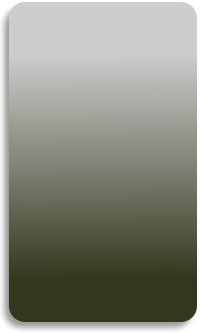1085 - Earliest known church rector
1086 - Turvey recorded in Domesday Book as a parish within the Hundred of Willey
1100s - Font in Turvey Church made
1136 - Earliest known mention of Turvey bridge
1197 - Mordaunt family gain the manor of Turvey
1400's - Church porch's foundations laid and iron work on door produced
1487 - Ye Three Fyshes Inn pub was built
1506 - date of oldest Mordaunt monument in the church.
1562 - John, 1st Baron Mordaunt dies and buried in Turvey Church
1571 - John, 2nd Baron Mordaunt dies.
1593 - date above door of bell tower of church
1601 - Lewis, 3rd Baron Mordaunt dies.
1603 - Turvey Abbey built for the Lords of the Manor, the Mordaunts
1606 - date of brass of Alice Bernard in the church.
1630 - Church weathercock made - he is inside the church as he got knocked off the tower by lightening in 1858
1622 - date on Ye Three Fyshes Inn.
1624 - beer first sold at Ye Three Fyshes Inn
1629 - Church register dates from this year. There are a few earlier surviving entries from another register of 1606
1643 - death of John, Earl of Peterborough, he is buried under the organ in the church
1682 - Earliest of current church bells was cast
1735 - Charles, 2nd Earl of Peterborough died and was buried in Turvey Church (under where the organ now stands)
1782 - Turvey Enclosure Act was passed
1786 - Charles Higgens purchases Turvey from the Mordaunts
1788 - Margaret Mordaunt donates the communion plate to the church
1792 - Turvey House was built by John Higgins, replacing the old Mordaunt's Turvey Old Hall (or 1794)
1795 - Turvey Bridge was rebuilt
1801 - the population was about 758
1804 - Rev Erasmus Middleton, a famous author of his day, is rector of Turvey until his death the following year
1805 - Rev. Legh Richmond comes to Turvey, he was a very famous man in his day
1805 - population of Turvey is around 800 (according to Rev Legh Richmond's memoirs)
1818 - the population is now 813 (according to the Education Returns of that year)
1820 - Turvey Bridge was rebuilt
1824 - the population was 1,417
1827 - death of Rev. Legh Richmond
1828 - 13 Dec, Weslyan Chapel registered by George Finch, baker
1828 - Congregational Church is formed
1829 - the new rector is Rev. Richard Cecil, his uncle was a famous minister in London
1830 - Charles Longuet Higgins compiles 'Turvey Abbey Scrapbook' - a collection of his observations
1831 - 28 Sep - Lightning strikes elm on Turvey Farm near Brittain's barn and kills two poor sheep!
1833 - Population of Turvey is 988 (according to the Education Returns of that year)
1834 - Work House closed and demolished following the passing of the Poor Law Amendment Act
1835 - Population of Turvey is 882 (according to Lewis’ Topographical Dictionary of England)
1836 - 1840 - The Laws Hotel was built
1839 - new Rectory built on site of original one (corner of Carlton Road)
1841 - population is now 1,814, according to the Census returns
1841 - the Congregational church is opened
1843 - Petition raised that the police force should be discontinued except for the chief constable
1844 - Jonah is erected in the river by the mill by John Higgins
1847 - Turvey Upper National School is built
1849 - the rebuilding of Turvey's three main streets is begun by Charles Longuet and Thomas Charles Higgins.
1849 - 1861 - Ladybridge Terrace & Church Row built by Charles Longuet Higgins
1851 - the population was 1,028, according to the Census returns
1852 - Extensive restoration work on church carried out by Sir George Gilbert Scott
1853 - Turvey Infants National School is built
1854 - the Rt. Rev Sir Lovelace Tomlinson Stamer is the curate of Turvey for just over a year
1855 - Church organ built and installed by Hill and Sons, a gift to the village from Charles Longuet Higgins
1855 - Considerable additions to Turvey Abbey
1856 - Church lych gate constructed
1858 - Top of church tower hit by lightning (knocking off the weather cock!)
1861 - the population was 1,093, according to the Census returns
1864 - the parapets and roof of the church date from this year
1866 - 3rd February - severe thunderstorms
1869 - the very popular Rev George Munby arrives in Turvey
1870 - John Battams Whitworth takes over the running of Turvey Mill
1871 - 18th July - Cemetery in Carlton Road was opened
1871 - a barn is converted by Colonel Higgens into the Working Men's Room - for the men building the railway
1872 - the railway line (Northampton to Bedford) was opened
1875 - Colonel Higgins erects arch over Nell's Well
1875 - Bedfordshire Reformatory is founded by Thomas Charles Higgins of Turvey House, it is certified on 9th April
1876 - R. Wooding seriously injured whilst ringing the church bells
1885 - 24th June - Official opening of the Barton Almshouses & Memorial Hall
1885 - 13th November - Fire destroys much of the Flour Mill (now known as 'The Mill')
1886 - 1st March - A very heavy snow storm from about 6am, lasting all day
1886 - Early Decemeber - severe flooding
1887 - Thursday 19th - Very strong gales, tiles were blown off of houses.
1887 - 21st June - Royal Jubilee Celebrations
1889 - 10th February - heavy snow storms
1893 - Church clock installed, the gift of George Sargent.
1901 - the population was 782 according to the Census returns
1903 - 24th October, the village celebrates the Diamond Wedding of Mr & Mrs Thomas Stanion
1905 - Rev George Munby leaves Turvey, he is presented with many gifts by his parishioners
1908 - Rev G Munby publishes 'Former Days at Turvey'
1911 - the population was 841, according to the Census returns
1914 - Turvey changed to the Diocese of St Albans.
1914 - Start of the Great War - many villagers were to die in the trenches
1919 - the war memorial is erected in front of the church
1919 - the first council houses in Turvey are built, in May Road
1920 - Turvey Bridge was widened
1925 - the Church lych gate was restored by Charles T. Lindsell in memory of his family who drowned
1930s - Church organ converted to electric power
1932 - Turvey bridge was widened and reinforced
1935 - 24th June - 50th Jubilee Celebration of the Barton Homes Almshouses
1939 - Start of World War II sees many Turvey men signing up for action
1947 - Very bad floods following six weeks of snow
1951 - the population was 733
1953 - 1965 - Cristo Crisps potato chip factory operating from the Mill
1953 - Jonah's 'wife', the second statue in the river by the mill, is erected
1958 - Tuesday 29th April, the BBC radio programme "Have a Go", starring Wilfred Pickles, is broadcast from Turvey village hall
1959 - Rev. Butler becomes the rector of Turvey, he remains so until 1969
1960 - the population was 1,000
1962 - the railway line is closed in March
1966 - original Barton Homes building demolished
1969 - Bailey's buses cease operation
1969 - The very popular new rector of Turvey is Rev Peter Jeffery. He is rector for thirty years.
1971 - demolition of the railway bridge over the main Bedford road
1972 - West Screen bequeathed to Church by Miss Emily Osborn
1980 - Order of Benedictine monks and nuns buys Turvey Abbey.
1981 - New Turvey Lower School built in May Road.
1991 - the population was 1,043
2000 - the population was 1,260
2001 - the populations was 1,192, consisting of 476 households and 489 dwellings
2001 - January - The Turvey Website was first started
2009 - the population is about 1,200
2011 - 1st December - Turvey Website moved servers and was relaunched with a new look


















